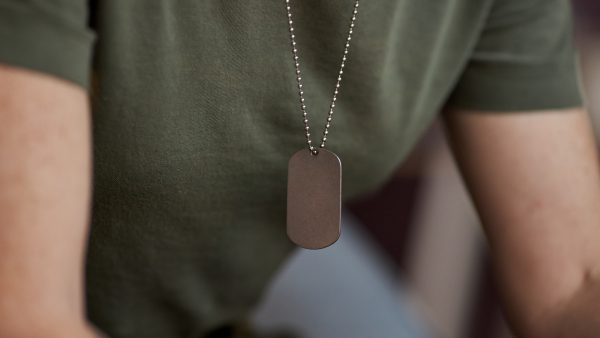Looking for Expert-Level VA Claim Answers?📱Call Us Now! 737-295-2226
In this blog, we will discuss va disability ptsd facts; including what PTSD is, its diagnosis, risk factors, treatment, stats, and everything else you need to know. The American Psychiatric Associations (APA) defines PTSD as “the psychiatric disorder that can occur in people who have experienced or witnessed a traumatic event, such as a natural disaster, a serious accident, a terrorist act, war or combat, rape, or other violent, personal attack.”
The definition is vital for our purpose down the road as we consider a VA disability claim. In World War I, this was commonly referred to as “shell shock,” and in World War II, it was known as “combat fatigue.” The VA didn’t officially recognize PTSD until it was added to the APA’s Diagnostic and Statistical Manual of Mental Disorders (DSM). Now consider this, many of us have lived with PTSD without even knowing it. And for many, you eventually come to the realization that you either have PTSD due to life/symptoms/family/reality hitting you hard, or you end up having to go speak with someone, as I did after realizing you can’t ignore it away, only to hear “you have PTSD.” My response was, “are you sure about that?”, but alas…I had it, and I sank deeper into my personal invisible mental abyss.
Diagnosis of PTSD
For a medical professional to diagnose you with PTSD, you may need to undergo a physical examination (this is to ensure that there are no physical reasons why you are experiencing these symptoms), a psychological examination, which will lead to a determination under the APA’s DSM-5.
This is key as we will cover service connection for PTSD and the requirement to have a diagnosis. This might seem like a lot of work or not worth it. The reality is there is no time limit on disability, we have worked with many Vietnam and even Korean war veterans that were service connected for their mental health claims. To put it bluntly, as Brian Reese would say if you can read this “GET YOUR BUTT TO THE VA OR A PRIVATE PROVIDER AND GET HELP! This is how all this begins.
For VA purposes, “fear of hostile military or terrorist activity” means that a veteran experienced, witnessed, or was confronted with an event or circumstance that involved actual or threatened death or serious injury, or a threat to the physical integrity of the veteran or others, such as from an actual or potential improvised explosive device; vehicle-embedded explosive device; incoming artillery, rocket, or mortar fire; grenade; small arms fire, including suspected sniper fire; or attack upon friendly military aircraft.
This is not an all-inclusive list, but when articulating your stressor for compensation purposes, the aforementioned has to be kept in mind.
Symptoms of PTSD
When figuring out what to look for, there are four types of easily recognizable symptoms.
Reliving the event:
Memories about the event can feel very real and scary. They can manifest themselves in the form of nightmares, flashbacks, or unwanted recurring memories. Sometimes this can happen due to a trigger (hearing the backfire of a car can bring up memories of combat), or they can occur inexplicably.
For me, one example of this has always been dump trucks or garbage trucks; when they drop their cargo with a loud clank or when driving and they hit a pothole, and the entire vehicle sounds like it’s being slammed on the ground, it reminds me of RPGs.
Avoidance of things that may trigger unwanted memories:
Avoiding people or events that remind you of the traumatic event. This can mean avoiding massive public places or avoiding visiting sites that are reminiscent of combat zones (for example, avoiding Las Vegas because the desert reminds you of Iraq). This can also mean a constant need to stay busy to avoid thinking or talking about the traumatic event.
Personally, this was something I always did that never made sense to many people, even those closest to me. I literally worked myself into pure exhaustion or pushed myself, so I would always be in a state of motion, busy, at times, even in chaos. As the saying goes, “an idle mind is the devil’s playground.” In my case, I was one of the first responders at Ground Zero in New York City in the aftermath of 9/11, and to this day, I have never been to the 9/11 memorial & museum, let alone back to the Ground Zero area, and I am a New Yorker.
More negative thoughts and feelings than before the traumatic event:
Having more negative thoughts about oneself or the world, negative thoughts or behaviors (self-destructive behaviors such as gambling, pornography addiction, alcohol or substance abuse, etc.), sadness, numbness, a sense of isolation, loss of trust, loss of interest in things “you used to enjoy”, difficulty expressing positive thoughts or emotions.
I am sure many of you can relate to at least one, if not all, of these examples, and you can probably add more. This is in line with the thought many of us have that “the best days are behind me,” and the present is just a dull, colorless experience. The energy to fit in and appear normal can the most draining activity.
Depersonalization: a sense of being an observer of, or detached from oneself Derealization: a sense of unreality, distance, or distortion
Feeling anxious or “on edge”:
This can mean trouble sleeping, relaxing, or concentrating, sudden outbursts of irritability or rage (road rage), acting out in unhealthy ways (see #3)
Hypervigilance: an enhanced state of sensory sensitivity accompanied by an exaggerated intensity of behaviors (being hyper-aware of your surroundings, constantly looking over your shoulder, a sense of paranoia, backs to the wall and eyes on the door)
Hyperarousal: Typically only associated with PTSD, abnormally heightened state of anxiety that occurs whenever you think about a traumatic event
It’s important to note that PTSD can come with a litany of other medical disorders including depression, anxiety, alcohol and substance abuse, suicidal thoughts or behaviors, social problems, relationship problems, and issues at work.
Risk factors for PTSD:
Doctors aren’t sure why some people are more prone to PTSD than others. Here are some reasons doctors believe make an individual more prone to experience symptoms of PTSD than others:
Stressful or traumatic experiences; this can include the number of traumatic events that have occurred, the severity or intensity, and the duration (witnessing the death of a loved one versus multiple deployments to combat zones)
- The likelihood that you will be exposed to a traumatic event (military, first responder, etc.)
- Family history of mental health issues (depression, anxiety, etc.) or substance abuse
- Temperament (personality traits)
- Lacking a functional support system in place
- Experience other trauma in your life (sexual assault, child abuse, etc.)
- The way your brain physically processes the chemicals and hormones that are released when your body is placed in a stressful situation
- Research has shown that PTSD can actually affect the way your brain functions and processes these hormones and chemicals, which can have the effect of mental disorders (including anger problems, depression, suicidal thoughts) but also actually changing your temperament and personality traits. This can be the case for many veterans that are known as “grumpy, cranky, moody, etc.”
- Research has also shown that a traumatic brain injury (TBI) or damage to the head caused by blasts in combat can exacerbate the symptoms of PTSD.
- It’s estimated that 10-20% of veterans returning from Iraq and Afghanistan suffered a TBI.
- Females are more prone to experience PTSD symptoms than males
- 17% of combat troops are female, out of that group, 71% reported PTSD due to sexual assault and sexual harassment within the ranks.
- African American men and Hispanic men are more likely to suffer from PTSD than White men; however, symptoms are less reported in these groups. (Culture plays a significant role here, weakness, whether perceived or implied, is frowned upon).
Treatment for PTSD
This is a touchy subject for many, but consider that treatment can teach skills to address and manage symptoms. I know many will think wait, if I get better my benefit go away? This is not entirely true, however. Some research has shown that with treatment, PTSD can actually diminish or disappear entirely, though many would argue otherwise. As my therapist told me once, for many of us, our disabilities have a pendulum effect, which can swing from one end to the next. As it relates to mental health, we can be in the right place one minute and a lousy place next, or in rating terms, 10% in the morning and 100% that evening and life happens.
While it may never actually feel “like the right time, or there’s not enough time, or there’s no way to support it financially,” it’s imperative to keep in mind that these are all symptoms of PTSD. Many treatments offer ways to change your thinking about yourself, the event, and others around you. When seeking treatment, it’s recommended that you learn everything you can about PTSD, remember to take time for yourself (self-care), avoid self-medicating, identify your triggers, nurture or develop a strong support system, and consider joining a support group.
Before you address it with your doctor, here are some recommended steps you can take:
- Learn everything you can about PTSD. There are thousands of resources that can educate you, especially on the VA’s website.
- Remember to take time for yourself (self-care); develop a routine that can help you get through the day.
- AVOID SELF-MEDICATING! Many times this can lead to alcohol or substance abuse, which can worsen PTSD symptoms. (Be careful!)
- Develop or nurture a strong support system; maintain close, open, honest contact with loved ones or consider joining a support group. (Easier said than done, but it’s worth it)
- Make a list of symptoms that occur regularly; but also make sure to include any that are debilitating or disruptive, even if they’re not as common.
- Try to develop a timeline for how long you’ve been experiencing these symptoms.
- List key personal information about the event – the actual event, any experiences that may have added to the trauma, triggers, the time(s) of the day that you are most heavily affected, things you’ve begun to avoid or change in your daily routine (this will come in handy as you move forward down the road in filing a claim).
- List any pertinent medical information – including medications (even self-medicating), substance or alcohol abuse, history of family mental health disorders, etc.
- Write down any questions you have for your doctor. When going to the doctor for a possible PTSD diagnosis, it’s essential to take your time and ask as many questions as you can. Get all the information you can because the more you know, the more effective treatment can be for you.
Medical Treatments
There are two widely accepted treatments available; both are effective.
Trauma-focused psychotherapies (TFP):
Prolonged exposure therapy: Your doctor will have you discuss the traumatic event or events over and over again. They will continue to expose you to the stimuli that trigger your PTSD and give you mechanisms for controlling your thoughts and feelings. While this has been shown to be incredibly effective for the short-term; it tends to prolong or disrupt any recovery in the long-term.
Cognitive Processing Therapy: This helps you identify and change any negative or guilty thoughts. Usually, your therapist will have you fill out some paperwork and worksheets to discuss your thoughts and feelings in certain situations, experiences, and events. Then you will work through with them to change your thinking process so that the traumatic event becomes less upsetting, and you can focus more on getting back to a more positive way of thought.
Eye movement desensitization and reprocessing (EMDR): People with PTSD react with negative thoughts and feelings to memories of their trauma. EMDR helps you process these thoughts and feelings by focusing on specific sounds and movements while discussing the traumatic event. These sounds and movements help your brain focus on getting through talking through the event. Over time, this will help you change your automatic reaction when discussing your experiences or events.
Medications
(Yes, medication) Because PTSD has been shown actually to change the chemical make-up of your brain, several medications have been proven to be effective at treating the symptoms.
A key difference to note between TFP and medications is that medication will help alleviate the symptoms, but not the underlying cause. Medications can become a lifelong treatment plan. TFP treats the underlying causes but does not improve the upfront symptoms. It is highly recommended that you use both resources when first seeking treatment. This is essentially putting together a team to tackle the issues from inside and out. While the meds, for most, open you up, therapy aims to go to work at the root cause/issue. (Many have had a bad experience with meds, but it shouldn’t be thought of as a single solution, rather it should be considered as a part of the solution).
There are two types of medications:
SSRIs (antidepressants): Sertraline, Paroxetine, and Fluoxetine are the three most common medications used in treating PTSD.
SNRIs (anti-anxiety): Venlafaxine is the most common anti-anxiety medication prescribed.
It’s important to note that some medications work more effectively on some than others. It is ok to talk to your medical professional if you feel your medicine is not helping or is adversely affecting you. Most doctors will work with you to find the medication that’s right for you. There is a trial and error cycle at times, but communication is key for this to work.
Some of you may have heard or been prescribed benzodiazepines. While they are effective at treating PTSD symptoms, they’re also very dangerous. Benzos (as they’re commonly known) are highly addictive and can create other mental health issues. (Steer clear)
PTSD Stats & facts
- 20% of veterans from Operation Iraqi Freedom and Enduring Freedom are suffering from PTSD.
- 12% of veterans from Desert Storm are suffering from PTSD.
- Per the latest study from the late 1980s, only 15% of veterans that served in the Vietnam war are suffering from PTSD; however, per the National Vietnam Veterans Readjustment Study, it is estimated that 30% of veterans are suffering from PTSD.
- 30% of soldiers have developed mental disorders within 3-4 months of returning home.
- An estimated 20% of returning Iraq and Afghanistan veterans developed alcohol and substance abuse once they returned home.
- With stigmas surrounding PTSD slowly fading away and there being more open access to therapy, support groups, and treatments, in 2018 there was a 50% increase (from 2017) in veterans coming forward symptoms of, or being diagnosed with PTSD.
There are many stigmas, and even more myths surrounding PTSD, but the reality is, there is nothing to be ashamed or fearful of. Because it is a “psychiatric disorder that can occur in people who have experienced or witnessed a traumatic event, such as a natural disaster, a serious accident, a terrorist act, war or combat, rape, or other violent, personal attack.”
We did not choose to experience or witness the events we did, nor did we choose to be exposed to them, but we were. The real question is, now what? Knowledge and communication are essential and the keys to recovery. You have to get to a place where you are tired of being sick and tired and want out of the same mental hole you’ve been digging yourself into deeper and deeper. Some say this can be like being a recovering alcoholic that will always have to be careful and vigilant to stay sober. I like to think of this is part of who I am.
Like I said above, there are times I am at 100% on the extreme side, and there are times when I’m at 10% on the low side. Yes, these times can all be in the same span of a day, but this is our reality; learning, self-awareness, understanding, and working to navigate the triggers that might seem to have left us, only to return as life happens. This is a journey, an individual one, but not one that you have to go it alone. Understand what PTSD is, know the risk factors, seek help and offer to support others, explore the right treatment for you, and know the stats and facts. These things will help bring awareness and help us potentially save a brother or sister in need.
Are you STUCK, FRUSTRATED and UNDERRATED?
You are not alone! We are Veterans helping Veterans!
Become an Elite Member and work with our Veteran Coaches to get the rating you deserve!
About the Author

About VA Claims Insider
VA Claims Insider is an education-based coaching/consulting company. We’re here for disabled veterans exploring eligibility for increased VA disability benefits and who wish to learn more about that process. We also connect veterans with independent medical professionals in our referral network for medical examinations, disability evaluations, and credible independent medical opinions and nexus statements (medical nexus letters) for a wide range of disability conditions.




